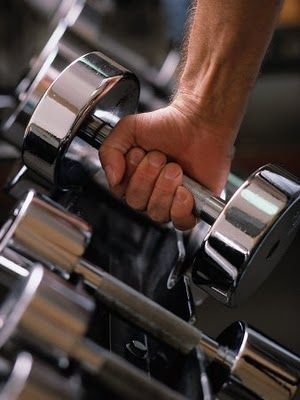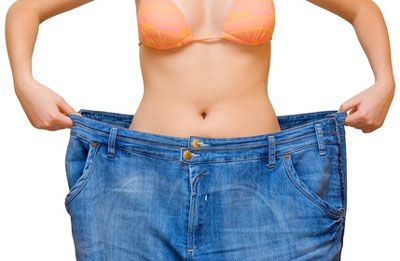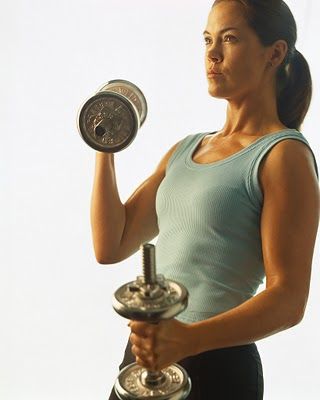Weight training burns more fat than cardio
Apr 23, 2012. at 7:41 AM
So you have decided that you want to lose some weight. You have replaced those twinkies with celery and carrot sticks, take a different route so you don't bypass your neighborhood Burger King on the way home from work, and have your ipod set to the repeat of "eye of the tiger" to try and give you the motivation you need when you realize you have only been running for five minutes but yet it feels like thirty. We have all been there, eating well and doing excruciatingly large amounts of cardio to shed those extra pounds, but did you know that all that hard work and effort may be pointless and could be as effective Lindsay Lohan's curfew if you're not lifting weights?

Yes as it turns out, whether you are male or female, pumping some iron or doing some weight bearing exercise should be an essential part of any fat loss program, and if you are not, you wont be squeezing into those skinny jeans as fast as you would like to. Why is this? Well it turns out muscle burns fat. We all know that the key to fat loss is a fast metabolism, and exercise and eating whole foods increases our metabolism, but did you know that the more muscle you have, the higher your metabolism? Lets take a look at the science and see how we can catapult your fat loss into hyperdrive and turn your body from a pudgy burger eating couch potato into a lean mean calorie burning machine.
Simply put, your metabolism is the amount of calories (or energy) your body needs or burns to maintain itself. Everything we do requires and consequently burns calories, from breathing, to sleeping, and yes even sitting on that couch watching the ladies on The View each morning burns calories. We have what's called a BMR and a RMR - Basal Metabolic Rate and Resting Metabolic Rate. They are both indications of how many calories your body needs to do absolutely nothing - just stay in bed and not move. Its the amount of energy your organs like your brain and heart need to keep your body alive. The way you calculate your BMR requires a little more science, so we will go into that further in a future post.
But did you know that your BMR and RMR can change? Yes, there are numerous things that can effect your metabolic rate either negatively or positively. Lets look at them below
1. Age: As you age goes up, your metabolic rate goes down
2. Diet: If you are constantly dieting, your metabolic rate goes down
3. Weight: If your weight goes down, your metabolic rate goes down also
4. Pregnancy: If you are pregnant, your metabolic rate goes up
5. Meal Consistency: Eating 6 meals a day increases your metabolic rate
6. Exercise: Cardio increase your metabolic rate
7. Muscle: The more muscle you have, the higher your metabolic rate


So if you are one of those people who are wanting to lose some fat and are spending countless hours pounding the pavement, or on those boring exercise machines in the gym, venture into the weights area and begin a weight training program (with the guidance of a professional or personal trainer of course - you need to know what you are doing as to avoid injuries), and you will see that fat start to burn off faster than ever.
Source: http://www.thehealthyboy.com

Lets take a closer look at point number two - Diet. Most people when wanting to lose weight decide to restrict their calories or "crash diet', and when they do this, their bodies drop some initial fat, but then plateau. Sound familiar? We have all been there, you may even be there right now, and not only is this bad for your fat loss efforts, its incredibly difficult to maintain and soon as you stop dieting and start eating again, you just put the fat straight back on. Such is the predicament of the Yo-Yo dieter. Why do you plateau? Well because when you embark on a calorie restricted diet for an extended length of time, your body realizes it isn't getting fed as much, so it decreases the amount of energy it expends to compensate. Hence your metabolism goes down faster than a Viagra at the Playboy mansion.
How do you stop this vicious cycle? Well one of the ways is point number seven - Muscle. The more muscle you have, the higher or "faster" your metabolism. Why is this? Well because muscle burns calories. The more muscle you have, the more calories you body needs to maintain that muscle mass. In fact one pound of muscle burns 10 - 20 calories per day, whilst one pound of fat only burns 5 calories.
Whilst cardio exercise such as running or a spin class is very effective at burning fat whilst you are doing the exercise, weight training not only burns fat and calories whilst you are lifting the weights, but as it turns out your body keeps burning those calories well and truly after you put the weights down, up to a reported 39 hours after you have left the gym. It's what those nerdy scientists in starchy white lab coats like to call EPOC. It stands for "excess post exercise oxygen consumption" and it basically measures the increases to your body's metabolism after certain exercises. High intensity cardio (as opposed to slow and steady cadio) has a relatively high EPOC, but weight training has the highest.
Now I can hear all my female readers our there screaming "but i don't want to bulk up". Well you don't need to be a roided out meathead with pimples popping out of your back and veins bulging out the sides of your neck to benefit. We are talking about lean muscle mass here, and you will benefit from any sort of strength training and resistance program. It takes a lot for a female to "bulk up" like your male counterparts, due to the fact that males have more of the hormone testosterone in our bodies, and I see too many women not lifting weights, or not lifting enough weight, because of this fear, and as a consequence not lose as much fat as they could be losing if they were to weight train. So put down those two pound weights and opt for something higher and you will see more benefits.
What are the best weight bearing exercises that will burn the most amount of fat? Compound exercises. These are exercises that require more than one muscle group to lift a weight. Isolation exercises on the other hand hone in on one particular muscle group, such as bicep curls or calf raises for example, and whilst they are great for building those individual muscles, if fat loss is your goal then you could be spending your time more wisely in the gym. Here are the compound exercises that use multiple muscle groups to lift the weight, and ones you should be incorporating into your weight training routine for maximum fat loss;
1. Squats
2. Deadlifts
3. Bench Press
4. Chin Ups and Pull Ups
5. Shoulder Press
6. Dips
Squats and deadlifts in particular work your whole body and they are some of (if not the) most important exercises in the gym for building muscle and burning fat.
Another tip for increasing your metabolic rate and burning as much fat as possible, is to do full body workouts whilst you are in the gym. Instead of separating or "splitting" your muscle groups into various days throughout the week (e.g. Chest and Triceps on Monday, Back and Biceps on Wednesday etc) try doing a full body workout every other day. It has been reported that full body workouts increase your body's growth hormone and testosterone production more than split routines, which results in more muscle and less fat for you. But you don't need to be at the gym for hours doing multiple exercises per body part, that would be about as exhausting as keeping up with Heidi Montag's surgeries, so just a few sets of the above exercises would suffice. Make sure you are lifting a reasonable amount of weight and resting on the days between workouts and you should see results.So if you are one of those people who are wanting to lose some fat and are spending countless hours pounding the pavement, or on those boring exercise machines in the gym, venture into the weights area and begin a weight training program (with the guidance of a professional or personal trainer of course - you need to know what you are doing as to avoid injuries), and you will see that fat start to burn off faster than ever.
Source: http://www.thehealthyboy.com
No comment.
Please login to post a comment

